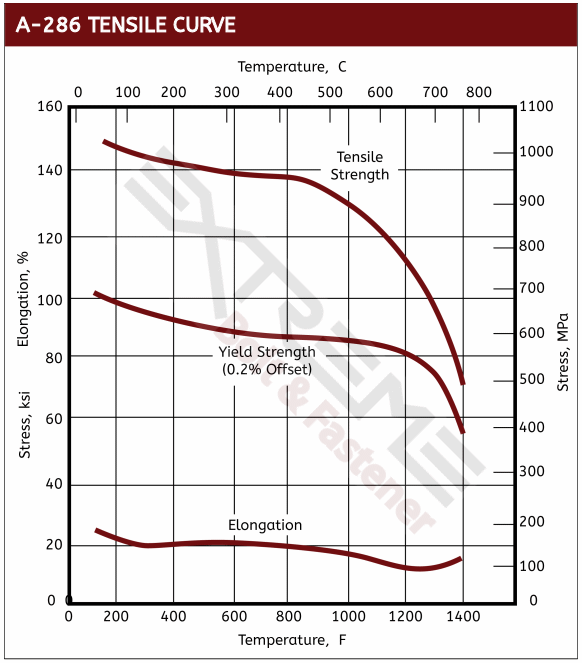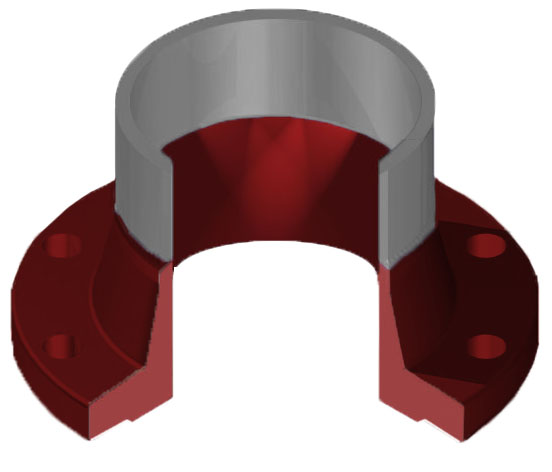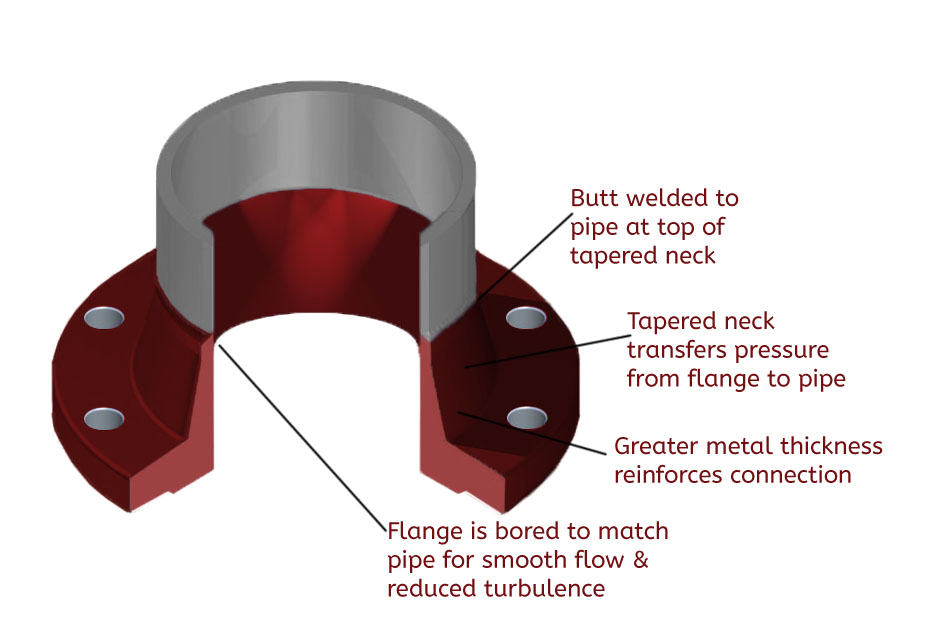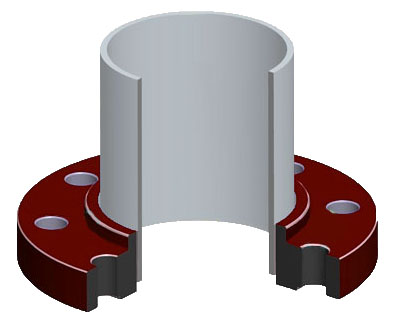A286 Lock Nuts
A286 / Alloy 660 for excellent high temperature oxidation resistance
- Good material for high temperature oxidation resistance
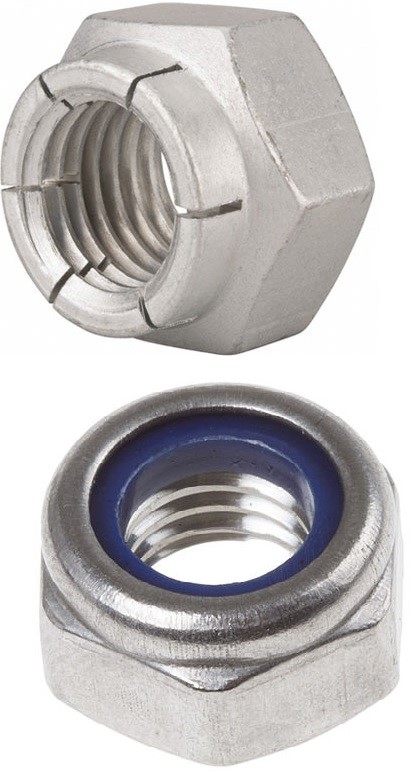
- Maintains high strength at elevated temperatures
- Specifications & heat treatment options
- Lock nut specifications
- ASTM A453 Grade 660
- A286 chemistry
- Datasheet for A286
- A286 lock nut availability
A286 nuts, also known as Alloy 660 nuts are stainless steel alloy which contains iron, nickel and chromium. A286 lock nuts are known for their high strength, creep resistance and oxidation resistance at elevated temperatures once age hardened. As a result, A286 nuts provide high levels of strength from room temperature up to about 1300°F (700°C).
A286 lock nuts are also mildly corrosion resistant. While they should not be used for strong acid environments, they provide excellent oxidation resistance up to 1500°F (815°C) in conditions that would typically be found in high temperature exhaust streams.

Applications
Because of the properties of Alloy 660 / A286, these lock nuts are often found in high temperature engine, manifold, exhaust and turbine applications as well as off-shore oil & gas applications. In addition, A286 / Alloy 660 is also non-magnetic and finds a niche in non-magnetic cryogenic equipment. In addition, we offer bolts and fasteners per ASTM A453 Grade 660. This specification ensures tensile and rupture properties for the most critical high temperature applications.
Resources: A286 Torque Specs
A286 / Alloy 660 Locknut Features and Beneifts
An A286 locknut resists loosening from vibrations and torque. One of the most common styles is a prevailing torque locknut. This kind of A286 / Alloy 660 locknut has a prevailing torque feature which deforms elastically, preventing it from freely spinning like a standard nut.
The two most common and reliable forms of prevailing torque locknuts are the flexloc style and the polymer insert lock nut. An Alloy 660 / A286 flexloc nut is all-metal in composition with a segmented collar that creates six “locking fingers,” that act as a spring. A286 polymer insert lock nuts are often referred to as nylon insert locknuts, although various high performance polymers can be used for the screw threads to “bite into.” Both flexlock and polymer insert locknuts are available in both hexagonal and 12 point configurations.
All Metal Flexloc Lock Nut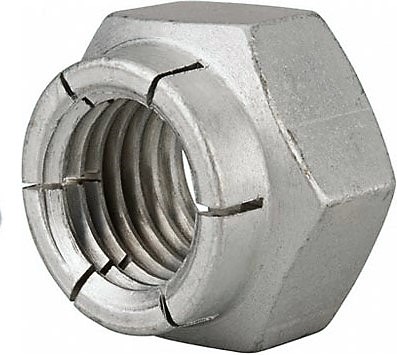 | 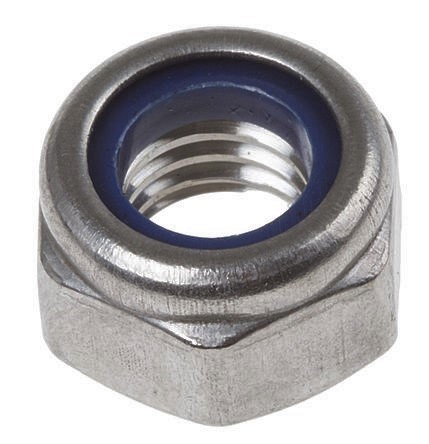 Polymer/Nylon Insert Lock Nut Polymer/Nylon Insert Lock Nut |
|
|
Other all metal lock nuts available include the A286 / Alloy 660 stover and elliptical styles. Though these styles are often a cheaper initial cost, they are less reliable than the flexloc style. As these styles delivering less prevailing torque cycles and often result in more failures, the flexloc style is a better investment for both reliability and cost savings.
Lock Nut Specifications
| Lock Nut Specifications • ASME B18.16.3M • DIN 980 • DIN 6923 • DIN 985 • DIN 986 • ISO 7042 • ISO 19513 • ISO 4161 • ISO 10511 • ISO 7040 | Mil Spec Lock Nuts NASM 25027, MIL-DTL-25027 and MIL-N-25027 MIL-N-25027 is superseded by MIL-DTL-25027; MIL-DTL-25027 is superseded by NASM 25027. Mil spec NASM25027 covers the requirements for steel, corrosion resistant steel (CRES), aluminum alloy, copper alloy and nickel-copper alloy (Monel 400) self-locking nuts. • 250˚F nuts • 450˚F nuts • 800˚F nuts |
A286 Lock Nut Availability
A286 lock nuts are available in these sizes. Please contact us for price and lead times.
Lock Nut Sizes
• #00 - 10"
• M1.2 - M250
ASTM A453 Grade 660
Material specification ASTM A453 Grade 660 applies to bolts, studs, studs and other fasteners. It ensures fasteners meet strength standards for use in high temperature bolting applications. ASTM A453 Grade 660 is classified into 4 property classes / heat treatments: A, B, C & D, each designated with different tensile and stress rupture properties. The most common of the ASTM 453 classes are class A or D. The grades A, B and C all have the same minimum tensile strength and minimum yield strength of 130ksi and 85ksi respectively. However grade D has a significantly better yield with a min tensile of 130ksi and a min yield of 105ksi.
Additional A286 / Alloy 660 Specifications, Cold Working & Heat Treatments
AMS A286 / Alloy 660 Heat Treatments
By AMS numbers, the most common for A286 / Alloy 660 is AMS 5737 (same as Grade A) and then AMS 5732 (same as Grade B).
A286 / Alloy 660 Cold Worked Fasteners
For additional strength, A286 could be aged and cold worked to achieve a min ultimate tensile strength of 160ksi upon request.
Additional Specifications
UNS S66286, ASTM A453, AMS 5525, AMS 5726, AMS 5732, AMS 5737, AMS 5804, EN 1.4980, GE B50T1181, GE B50T12, GE B50T81, Werkstoff 1.4980, ASTM F2281
A286 / Alloy 660 Chemistry
Mechanical Properties

